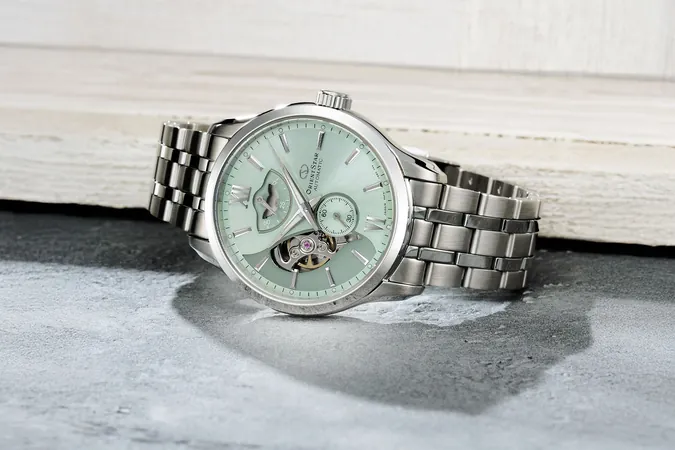
Examining the Safety Profile and Duration of Adjuvant CDK4/6 Inhibitors in HR+ Breast Cancer: A Closer Look at Ribociclib
2024-12-22
Author: Siti
Case Summary
A recent case features a 52-year-old woman whose routine mammogram revealed a significant mass in her left breast. Further imaging and core biopsy confirmed a 1.9 cm grade 3 invasive ductal carcinoma (IDC), with estrogen receptor positivity at 80% and progesterone receptor at 25%. Notably, HER2 was negative (<1 by immunohistochemistry). Moreover, her 21-gene recurrence score was reported as 25, and the Ki-67 index, which indicates the proliferation of cancer cells, was found to be 25%. Sentinel lymph node biopsy yielded negative results for IDC and PET-CT staging showed no signs of distant metastasis. Germline testing also came back negative for pathogenic variants, leading her to undergo a left mastectomy.
Insights from the NATALEE Trial on Ribociclib
In discussions surrounding the safety profile of ribociclib (Kisqali), notable findings emerged from the phase 3 NATALEE trial (NCT03701334). Neutropenia was identified as the most significant toxicity, occurring in 62% of patients for all grades and impacting 42% at grade 3 levels. Other side effects included arthralgia and nausea, but elevations in liver enzymes (AST/ALT) were also worthy of mention: 19% experienced an all-grade increase in ALT, while 6% faced grade 3 elevations. Discontinuation due to adverse events happened in 19% of cases, with a median time to discontinuation of about four months.
Efficacy with Dose Reductions
The trial revealed that dose reductions did not significantly compromise efficacy. In line with findings from similar studies such as monarchE (NCT03155997), where abemaciclib was shown to maintain effectiveness despite dose reductions, ribociclib was initiated at 400 mg but could be reduced to 200 mg without sacrificing therapeutic benefits. Importantly, patients in NATALEE had only one permissible dose reduction, contrasting with the metastatic setting that allows for two reductions.
Discontinuation Rates and Safety Profiles
An updated analysis at the European Society for Medical Oncology Annual Congress (ESMO) indicated a discontinuation rate of about 20%. Liver-related adverse events were the primary reason, with 9% of patients experiencing grade 3 toxicities. In contrast, grade 3 QT prolongation was low at 1%, and there were no reports of grade 3 interstitial lung disease.
Treatment Decisions: Ribociclib vs. Abemaciclib
When considering treatment with either ribociclib or abemaciclib, healthcare providers can factor in patient tolerability and safety profiles. Ribociclib has a longer duration of 3 years compared to abemaciclib's 2 years. Patients experiencing significant side effects from one medication may benefit from transitioning to the other; for example, if ribociclib causes severe neutropenia, abemaciclib might be a suitable alternative.
Both drugs present unique safety risks. Abemaciclib tends to cause more gastrointestinal issues, while ribociclib more frequently leads to hematological toxicities. Understanding these nuances allows more tailored and effective management of individual patient needs.
Conclusion
As the landscape of breast cancer treatment evolves, investigations into medications like ribociclib and abemaciclib provide crucial insights that can inform treatment plans for patients with HR+ breast cancer. Ongoing trials and research continually refine our understanding of safety profiles and efficacy, giving both patients and oncologists confidence in managing this complex disease.
Stay tuned as we continue to uncover the intricacies of breast cancer therapies, revealing what could become game-changers for patients worldwide!




 Brasil (PT)
Brasil (PT)
 Canada (EN)
Canada (EN)
 Chile (ES)
Chile (ES)
 Česko (CS)
Česko (CS)
 대한민국 (KO)
대한민국 (KO)
 España (ES)
España (ES)
 France (FR)
France (FR)
 Hong Kong (EN)
Hong Kong (EN)
 Italia (IT)
Italia (IT)
 日本 (JA)
日本 (JA)
 Magyarország (HU)
Magyarország (HU)
 Norge (NO)
Norge (NO)
 Polska (PL)
Polska (PL)
 Schweiz (DE)
Schweiz (DE)
 Singapore (EN)
Singapore (EN)
 Sverige (SV)
Sverige (SV)
 Suomi (FI)
Suomi (FI)
 Türkiye (TR)
Türkiye (TR)
 الإمارات العربية المتحدة (AR)
الإمارات العربية المتحدة (AR)